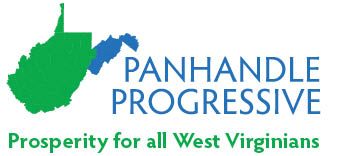Rep. Alex Mooney’s Feckless Vote on Healthcare
On May 4, 2017, the United States House of Representatives voted to pass the American Health Care Act (AHCA) by a narrow margin of 217 to 213, sending the bill to the Senate for deliberation. This Bill would repeal the majority of the Affordable Care Act (ACA) known as Obamacare, a promise made by Donald Trump and numerous Republican legislators during the 2016 campaign.
It is hard to describe in measured words the destructive impact the AHCA would have on West Virginia. Obamacare permitted the expansion of Medicaid benefits to large numbers of uninsured West Virginians. Because of this expansion we made great progress insuring low income, working adults, reducing the uninsured rate from 17% of the population to 5%. Repealing this feature of the law will cause 175,000 West Virginians to be uninsured once again.
One effect of the loss of health insurance is that people who need to see a doctor simply won’t. These people are at risk that their health status and earning capability will decline. Then there is opioid addiction, which has reached epidemic proportions in West Virginia. In 2016 approximately 20,000 people were treated for substance abuse disorder under the Medicaid expansion. This treatment will evaporate under AHCA. Some of the newly uninsured will get emergency treatment for illness and injury at hospitals and clinics. This is called uncompensated care.
When there is no insurance, who actually pays for uncompensated care? The people receiving care could pay out of their pockets. More likely, state and local governments or the hospitals and clinics themselves could be forced to absorb the cost. One projection estimates that West Virginia hospitals would be asked to provide $135 million more in uncompensated care annually.
Numerous national trade associations and interest groups operating in the healthcare space strongly opposed the AHCA. These included the AARP, The American Medical Association, The American Hospital Association, and Catholic Health Association of the United States. Even conservative groups such as Heritage Action and the Cato Institute opposed the AHCA.
In a series of three letters beginning in January 2017, two West Virginia Governors and the West Virginia Cabinet Secretary for Health and Human Services warned our Congressional delegation about the consequences of a repeal of Obamacare. On January 9, Governor Earl Ray Tomblin wrote to House majority leader Kevin McCarthy and the West Virginia delegation, noting that West Virginia’s population is one of the most rural and oldest in the nation, with poor health indicators. He said, “Federal funding must be maintained or West Virginia’s health care infrastructure will collapse.”
On February 15, Governor Jim Justice wrote a number of U.S Senators and sent copies to Rep. Mooney and the others in the West Virginia delegation. Justice said “Repeal of Medicaid expansion would eliminate up to $900 million from West Virginia’s healthcare economy annually” leading to the potential loss of 16,000 jobs.
None of these entreaties had the desired effect on Rep. Mooney — he voted in support of the AHCA. His official statement began as follows: “Today, I was proud to vote for the American Health Care Act. I pledged to voters in the Second District that I would vote to repeal and replace Obamacare and today I fulfilled that pledge.” His statement pointed to the “collapsing market” for health insurance and asserted that the free market would provide better options for people who can afford insurance, but offered not one word concerning the large swath of West Virginians who will be rendered uninsured or the impact of repeal on West Virginia’s economy.
Why would our Congressman vote for the AHCA in the face of unrebutted information that it would devastate the lives of many West Virginians and deal another blow to our economy? One answer is to take him at his word – he promised to do it and he was determined to keep his promise. While there is something to be said for keeping promises, the moral value of doing so here is petty in comparison to the moral imperative to protect hundreds of thousands of people who would lose healthcare coverage.
There is a less attractive explanation that may be closer to the truth. A vote in favor of the AHCA was demanded by President Trump and the House Republican hierarchy, and Rep. Mooney did not have the fibre to oppose them despite the cost to his constituents. More likely he was happy to join with them for ideological reasons despite the costs to his constituents.
As for being “proud” of his position on the AHCA, Rep. Mooney certainly has not acted like it. In March when he and Senator Joe Manchin met with constituents at a state Congressional reception in Washington, D.C., many of the attendees aggressively questioned Rep. Mooney about the AHCA. Mooney fled the room when he could no longer provide answers. Subsequently, he was quoted in the Martinsburg Journal claiming that these people were “professionally trained radicalists.” But in the comments submitted by readers of the Journal’s original March 11, 2017 article about the incident, Sara Le Rana said:
I was in attendance as an interested citizen. I WAS NOT paid or a “professionally trained radicalist.” I’m uncertain what that is. Mooney RAN, not walked, he RAN rather than stay and do his job. Manchin listened, encouraged the guests closer to him. Mooney refused to listen or stay to respond in a respectful manner . . . . The dude ran.
This evasive behavior on the part of Rep. Mooney has been typical of his lack of responsiveness, and that of his staff, in large part around the healthcare issue. West Virginians deserve better than this.
2018 cannot come soon enough.

 The image to the right is a statue called Man Controlling Trade installed outside the Federal Trade Commission in Washington. It was commissioned in 1937, before the United States had completely crawled out of the Great Depression. Most historians agree that among the causes of the Depression was the credit banks granted for speculative investment in stocks. This was followed by the stock market crash of 1929, which led to the failure of 9,000 banks. This risky behavior with depositors’ money had been completely unregulated. The statue’s powerful horse is meant to represent the danger of uncontrolled economic behavior.
The image to the right is a statue called Man Controlling Trade installed outside the Federal Trade Commission in Washington. It was commissioned in 1937, before the United States had completely crawled out of the Great Depression. Most historians agree that among the causes of the Depression was the credit banks granted for speculative investment in stocks. This was followed by the stock market crash of 1929, which led to the failure of 9,000 banks. This risky behavior with depositors’ money had been completely unregulated. The statue’s powerful horse is meant to represent the danger of uncontrolled economic behavior.